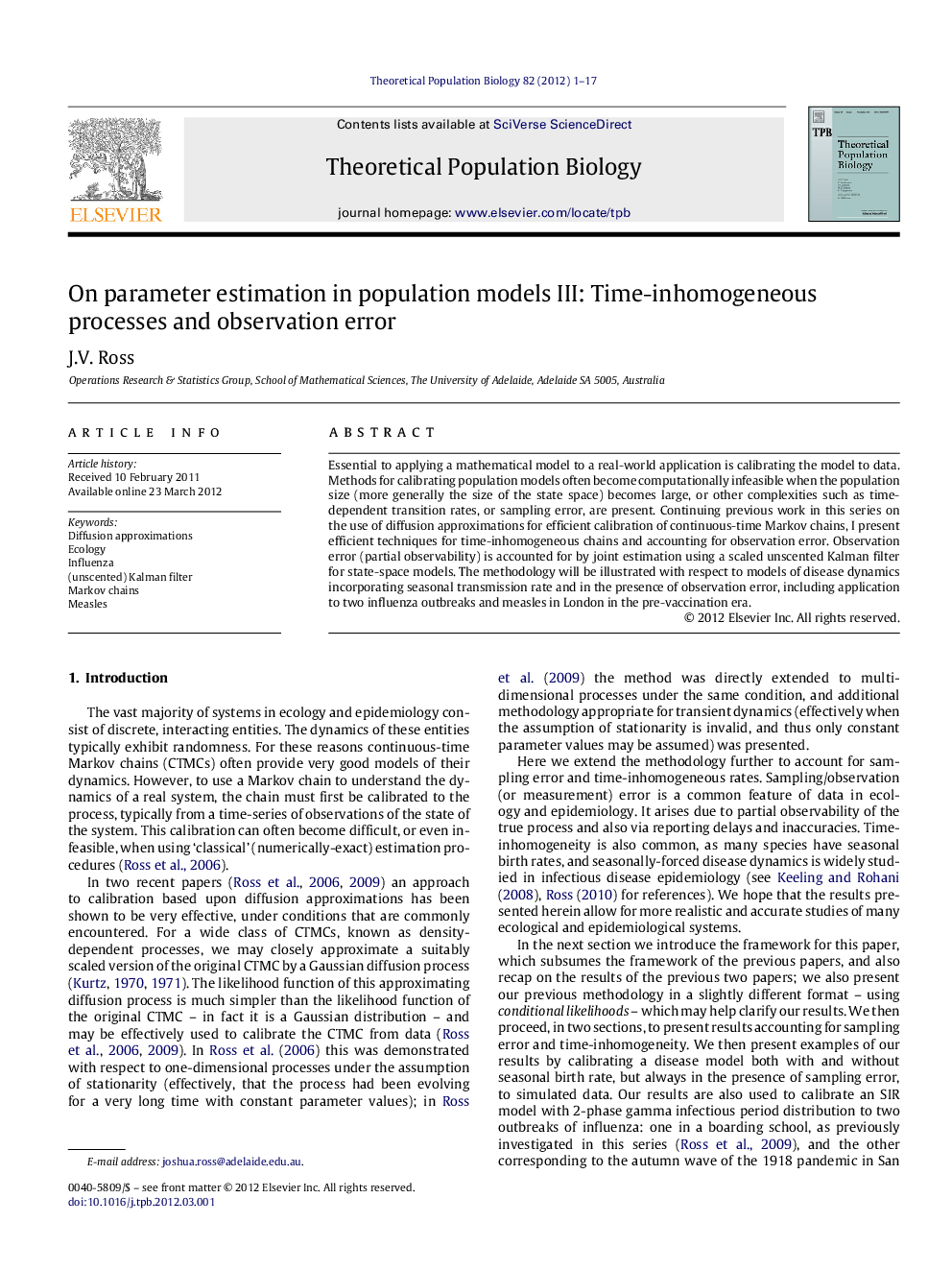| Article ID | Journal | Published Year | Pages | File Type |
|---|---|---|---|---|
| 4502462 | Theoretical Population Biology | 2012 | 17 Pages |
Essential to applying a mathematical model to a real-world application is calibrating the model to data. Methods for calibrating population models often become computationally infeasible when the population size (more generally the size of the state space) becomes large, or other complexities such as time-dependent transition rates, or sampling error, are present. Continuing previous work in this series on the use of diffusion approximations for efficient calibration of continuous-time Markov chains, I present efficient techniques for time-inhomogeneous chains and accounting for observation error. Observation error (partial observability) is accounted for by joint estimation using a scaled unscented Kalman filter for state-space models. The methodology will be illustrated with respect to models of disease dynamics incorporating seasonal transmission rate and in the presence of observation error, including application to two influenza outbreaks and measles in London in the pre-vaccination era.
